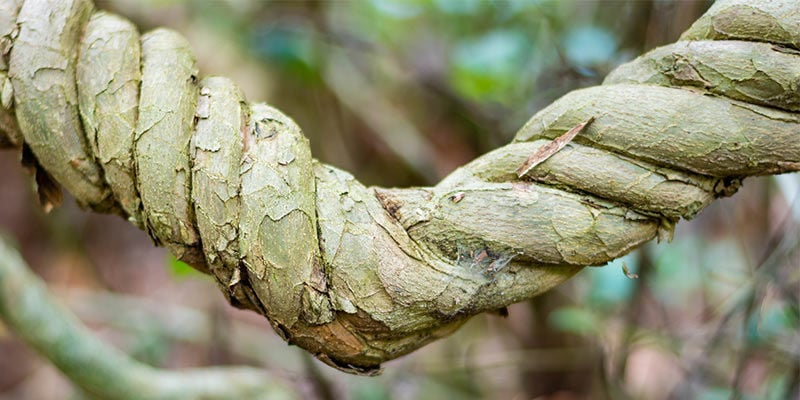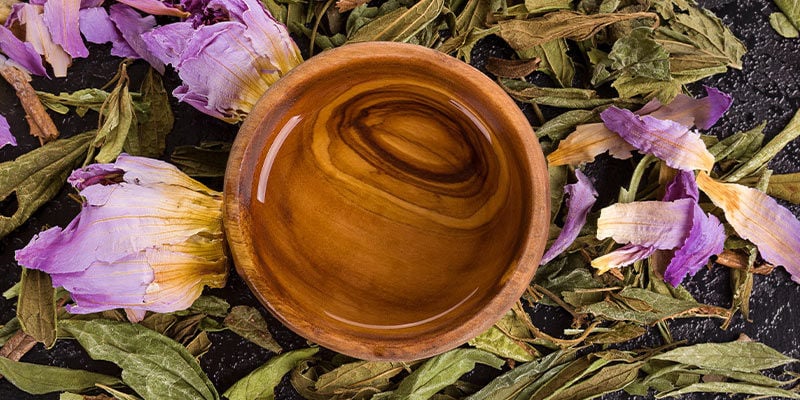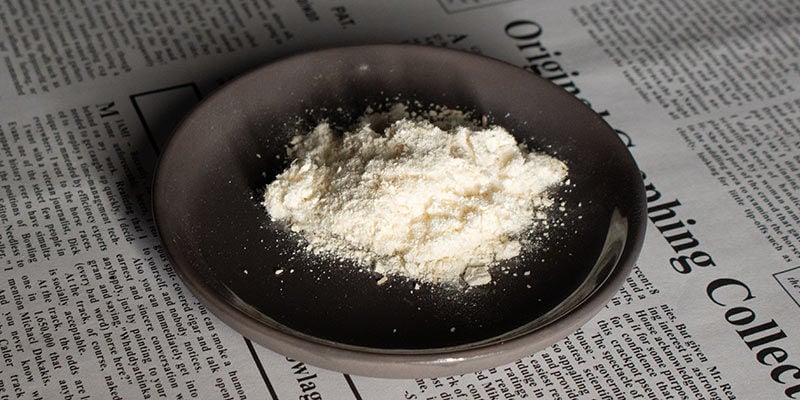
5 Herbs To Help With Lucid Dreaming
If you are looking for a herbal aid to your lucid dreaming endeavours, we have the list for you. Below you will find a selection of traditional herbs all anecdotally thought to help dreamers reach a lucid state. So try them out!
Lucid dreaming and altered states of consciousness play a central role in the spiritual and medicinal practices of ancient societies and indigenous people. While many of the substances used by our ancestors for thousands of years (such as ayahuasca, peyote, and mushrooms) are now strictly regulated by our governments, there are still some viable legal alternatives out there for those of you looking to experience with dream-states.
Below is a list of some of the best substances and herbs to provoke lucid dreams. Remember, there has been little scientific research into these products, so remember to use them carefully and with respect.
Note: Unless otherwise noted, most of the herbs on this list are legal. However, always make sure to double check your local laws to ensure you’re operating within them.
Smartshop
Visit the Zamnesia Smartshop for everything from natural psychedelics like salvia, to herbs, energisers, and aphrodisiacs.
AFRICAN DREAM ROOT (SILENE CAPENSIS)

Silene capensis, known as the African Dream Root, is a plant native to the eastern cape of South Africa. It has been used for centuries by shamans from the indigenous Xhosa tribe for spiritual rituals. It is also sometimes referred to colloquially as the Gunpowder Plant or Wild Tobacco in the West.
Most of the information available on the Xhosa and their use of Silene capensis comes from Manton Hirst (Indo-Pacific Journal of Phenomenology) and Jean-Francois Sobieki (healer, ethnobotanist, and wellness coach), who both spent several years living among and observing the tribe.
As the name suggests, the power of this plant is contained within its roots. These roots are often cooked into a kind of mixture, similar to how other psychoactive plants like peyote or Bolivian torch are prepared. This mixture is then ingested, after which it begins to take effect.
The Xhosa use Silene capensis for many of their rituals, including their traditional mortuary ritual, where the mixture is rubbed on an ox which is later slaughtered and eaten. The mixture is also drunk prior to eating.
The Xhosa cherish the plant, but it is important to note that it does not produce guaranteed results. Some people may just experience a more profound sleep that leaves them feeling refreshed and revitalised. Others, however, may experience very vivid, lucid dreams that are extremely memorable.
The root is traditionally bashed to produce a thick, foamy liquid. However, we generally suggest pulverizing the root and preparing it in capsules for direct consumption. A recommended dose is roughly 500-3000mg per day, which is also much easier to measure in capsule form. We recommend taking smaller doses for the first few days, and then gradually increasing up to 3000mg as needed.
MUKANYA KUDE

Mukanya Kude is another dream substance originating from the African continent. It is made from the bark of the Fever Tree, or Acacia xanthophloea and is often misclassified as a herb. Makanya kude has been used for hundreds of years by native tribes in Africa, especially the Zulus, who often incorporate it into their shamanic rituals.
It is native to both eastern and southern Africa, and grows naturally in a variety of countries, including Botswana, Kenya, Malawi, Mozambique, Somalia, South Africa, and many more.
The tree can grow as high as 25 metres and is characterised by small leaflets and notably smooth, almost powdery bark that generally boasts a rich green-yellow tinge. It also produces beautiful puffy, bright yellow flowers.
The bark from the tree is often used by native tries to induce lucid dreams. While the way it is prepared varies, it is usually brewed together with other medicinal herbs and plants (including Silene capensis and Synaptolepis kirkii) to produce a thick, foamy beverage. Shamans mostly use the herb as a divination tool and consume it before sleeping to help induce vivid, memorable, and especially lucid dreams.
In these dreams, some report finding answers to particularly puzzling questions, revelations, or even the ability to communicate with their ancestors. While makanya lude is often taken in conjunction with other herbs, it can also be used in isolation. Infuse the powdered root in boiling water for roughly 5-10 minutes, strain it, and drink it like a regular tea. As with other dream-inducing substances, it's best to use mukanya kude no more than 1 hour before going to bed.
CALEA ZACATECHICHI

Calea zacatechichi, often simply dubbed the “dream herb,” is made from a species of flowering plant native to Central America. It is often referred to as bitter grass, or Mexican calea. Like with most of the substances on this list, this plant is deeply ingrained into indigenous culture in Mexico and surrounding areas.
Some native terms for Calea zacatechichi include bitter gum, white bitter herb, and bitter grass, mainly due to the plants extremely bitter flavour. To mask this, it is sometimes prepared together with osmanthus flowers.
Like with many oneirogens, the exact compounds responsible for giving Calea zacatechichi its unique ability to alter dream states/patterns are unknown. However, the compounds that have been isolated from this plant include special terpenes and flavonoids. The terpenes are believed to be actively responsible in the plant’s effect on sleep.
Calea zacatechichi can be brewed into a tea and sweetened with sugar or honey. Alternatively, it can also be taken orally in tablet form. As always, it’s best to start with smaller doses, especially as the plant is known to produce some side effects like vomiting, nausea, and hallucinations.
Note: Calea zacatechichi is illegal in some areas, such as Poland and some states in the US.
DEVILS CLAW
The plant is mainly found in the eastern and southeastern parts of Namibia, Southern Botswana and the Kalahari region of the Northern Cape, South Africa. It usually grows in deep, sandy soil in areas with low rainfall. It produces creeping stems and a notable claw-like fruit/capsules which contain the plant’s seeds.
Devil’s Claw roots are usually sold in a powdered form which can be taken as capsules, with food, or brewed into tea. While it isn’t particularly a dream herb, Devil’s Claw is a kind of all-round substance that many people regularly incorporate into their regular routine or medicine cabinet. Devil’s Claw doses usually consist of about 50mg. As with the other substances on this list, it’s always best to start small and build up your doses as needed once you’ve grown accustomed to the plant and its effects.
UVUMA-OMHLOPE
This herb is taken from Synaptolepis kirkii, a special kind of shrub/bush native to Africa. Again, this plant has a long history as a folk medicine and plays an especially important role in the spiritual and religious rituals of tribes such as the Zulu and Xhosa.
The plant boasts a beautiful appearance with bluish-green leaves, a black stem, and porcelain white roots, which harness most of the plant's unique properties. As is common with many of the dream substances used by indigenous peoples of Africa, uvuma omhlope is usually brewed with a combination of other herb and then ingested.
The plant is said to produce effects similar to those of mukanya kude, offering guidance in the form of vivid, memorable, and lucid dreams. Again, the plant is rumored to help people contact their ancestors and find a profound unity with nature and the spiritual world.
Of all the substances on this list, this is probably the least common. Hence, there has been very little research into the plant and its compounds, meaning we don’t truly understand how it interacts with our bodies.
For best results, we suggest brewing powdered uvuma-omhlope roots in boiling water for about 5 minutes, straining the mixture, and drinking it like a regular tea no more than 1 hour before going to bed.
Remember that most of the herbs on this list are alternative folk medicines, so don’t expect to find detailed clinical studies into what they are and how they work. Unfortunately, our society has lost touch with many of the traditional healing and spiritual procedures practised by our ancestors, so you’ll have to experiment with a variety of these plants to see what best works for you.
For best results and safety, prepare each herb as per the instructions on the pack or in this article. Finally, avoid mixing any of these substances with alcohol, other recreational drugs, or medication.
-
 8 min
10 October 2022
How To Use Cannabis To Improve Sleep
Cannabis is used for a wide variety of purposes, including to promote a healthy night's rest. But does weed really benefit your slumber, or does it harm sleep quality? Furthermore, which cannabis...
8 min
10 October 2022
How To Use Cannabis To Improve Sleep
Cannabis is used for a wide variety of purposes, including to promote a healthy night's rest. But does weed really benefit your slumber, or does it harm sleep quality? Furthermore, which cannabis...
-
 4 min
22 July 2021
Top 10 Lucid Dreaming Apps For iOS & Android
Lucid dreaming is a sensational experience. Explore new worlds, invent vivid scenarios, or dance with your favourite rockstar—all of this and more is achievable through the art of lucid dreaming....
4 min
22 July 2021
Top 10 Lucid Dreaming Apps For iOS & Android
Lucid dreaming is a sensational experience. Explore new worlds, invent vivid scenarios, or dance with your favourite rockstar—all of this and more is achievable through the art of lucid dreaming....
-
 3 min
17 May 2017
Sleep Masks And Lucid Dreaming
A sleep mask can be a great help with relaxation and meditation, and if we want a good night’s sleep. But did you know that a sleep mask can also be an excellent lucid dreaming aid? There are...
3 min
17 May 2017
Sleep Masks And Lucid Dreaming
A sleep mask can be a great help with relaxation and meditation, and if we want a good night’s sleep. But did you know that a sleep mask can also be an excellent lucid dreaming aid? There are...
-
 2 min
27 August 2014
Exploring The Dreamworld With Calea Zacatechichi
Originating from Mexico, Calea is a fascinating dream herb that has long been used by indigenous tribes as way of seeking guidance from the spirits.
2 min
27 August 2014
Exploring The Dreamworld With Calea Zacatechichi
Originating from Mexico, Calea is a fascinating dream herb that has long been used by indigenous tribes as way of seeking guidance from the spirits.














 United States
United States













